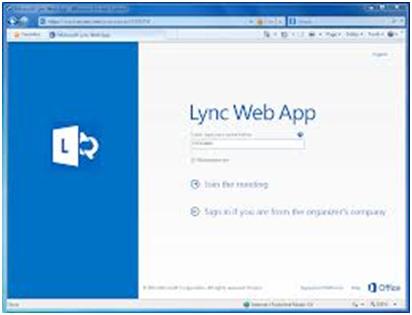Before rolling out the analysis, it’s important to understand the technology. Microsoft Lync 2013 helps connect to multiple people across different operating systems and mobile devices. As a unified enterprise-ready communications platform, it enables an environment that facilitates instant video conferencing, messaging, voice chats and meeting. In short, it provides a single and consistent presence experience for its client.
While Microsoft may project changes brought about in the Lync Server 2013, enabling better experiences than ever before, there are a few concern areas that you users need to be aware of.
- Video Conferencing limitations: Continuing to be a low area, this version of Microsoft’s Lync too has been observed to be immature in terms of its video conferencing capabilities. Besides, it doesn’t provide end-to-end solutions such as video-room systems, video desktops, telepresence systems or video gateways. Its solutions for multi-party video conferencing, works on desktops only. Its conferencing capabilities are also limited with allowing a maximum of five people in a conference only and feature lacks such as server-side recording, dual presentation and multi-casting. Other problems associated with its video conferencing capabilities are its interoperability constraints with 3rd party products and that it consumes exorbitant bandwidths which are about 600% more than its counterparts.
- ü Lack of consistent BYOD support: BYOD is the next big revolution that’s happening in working environments. As such Lync 2013’s compatibility with the BYOD culture is critical. While it does support presence and instant messaging on platforms like iOS, Android and Windows, it falls short of features like simultaneous multi-party video and viewing shared meeting content.
- ü Voice limitations persist: This was one of the major lookout areas in terms of improvements expected. To begin with, users will have to invest in conference phones, Session Border Controllers for security purposes and 3rd party gateways. If you have a pre-existent system in place, you actually have to rip it apart. Besides it doesn’t even have call recording, call parking or contact centre features, making it troublesome for most users.
- ü Real-time collaboration shortcomings: Microsoft’s Lync 2013 requires sourcing a number of applications from various 3rd party vendors, making it unsuitable for users looking for an all-in-one solution.
- ü Investments in trainings: Due its nature of complexities, organizations will need to invest in training their staff, in-mates. Besides, they will also have to hire individuals with Linux certifications to help deploy and manage the system and troubleshoot as and when required. All this requires huge investments that organization may want to reconsider beforehand.
- ü Investments in Lync Voice too high: As per the conclusions from detailed interviews done with 211 real world customers, it was observed that Lync’s users spent $1,912 on an average, in installations (on the 1st year itself).
- ü Customer Choice is limited: Essentially Microsoft’s way with its products and sales strategies, for instance, product bundling, can end up in users being locked into their systems.
For the perfect communications solution, organizations require services that can be imbibed into existing systems, with delivering effective and efficient quality services in a cost-effective structure.
Have you been using Microsoft Lync 2013? How has your experience been? What according to you are its biggest drawbacks? Share your thoughts and takes with us.







